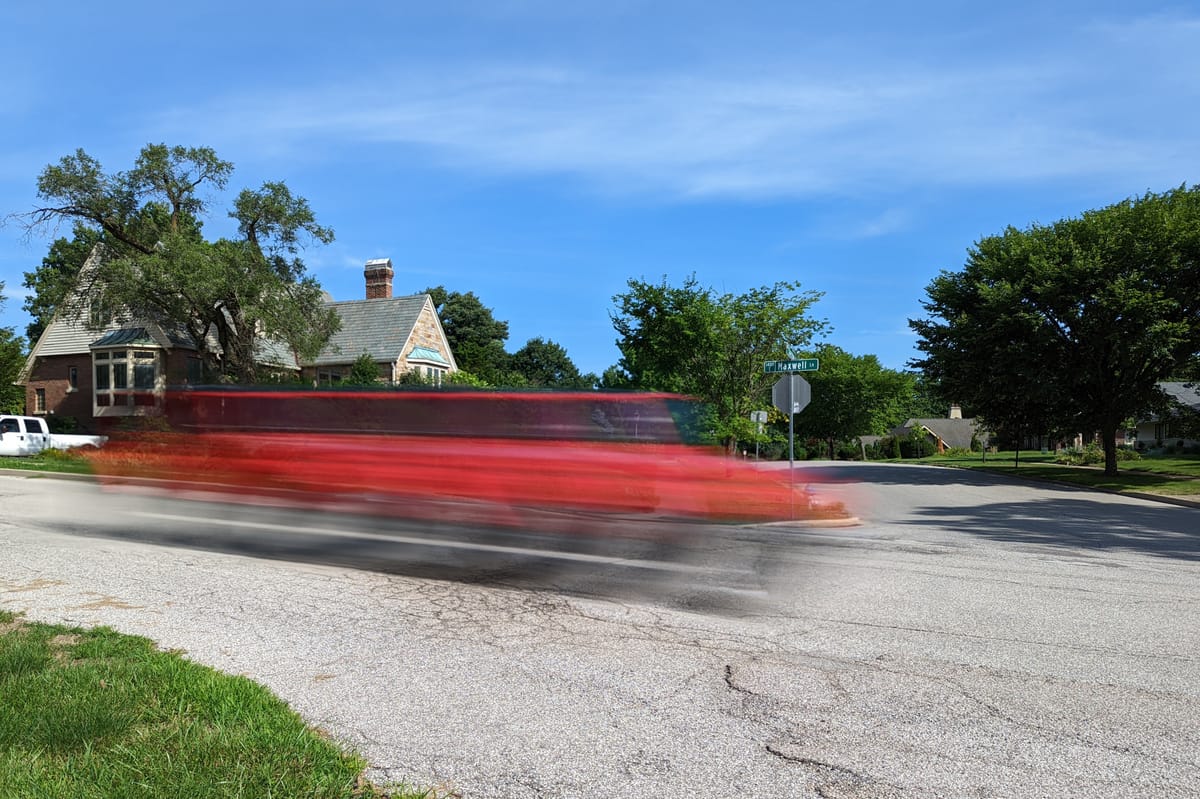Traffic notebook: Added stops at Maxwell-Sheridan to be weighed by Bloomington city council



Probably at its regular meeting next week (Oct. 19), Bloomington’s city council will give a first reading to an ordinance that would make the intersection at Maxwell Lane and Sheridan Drive an all-way stop.
Currently it’s a two-way stop, which requires traffic on Sheridan to stop at Maxwell. The added stop signs would also require Maxwell traffic to stop at Sheridan.
The impetus to add the all-way stop comes from neighbors who find that they have to “scurry” across Maxwell, because traffic coming from the uphill side of the road, that is from the west, is not visible until it’s close to the intersection.
As nearby resident Stephanie Hatton put it, when she addressed Bloomington’s traffic commission in late July, “We feel that the only way to make this intersection truly safe for all is to legally require vehicles to cease—not just slow down or be calmed.”
Hatton added, “An all-way stop ensures pedestrians of all ages and abilities have the time and right-of-way to cross safely.”
A first reading next week would cue up a possible vote at the council’s Nov. 2 meeting, to enact the additional stop signs.
At the city council’s noon work session last Friday, city council attorney Stephen Lucas described the ordinance to be introduced as sponsored by Dave Rollo, whose district includes the intersection.
It’s not a surprise that the ordinance is being proposed and that Rollo is sponsoring it. Like Hatton, Rollo had spoken during public commentary at the late July meeting of the city’s traffic commission. Rollo indicated at that time that he would be willing to sponsor an ordinance to add stop signs at the intersection.
At that July meeting, the traffic commission voted 5–2 to support the engineering department’s staff written recommendation against making the Maxwell-Sheridan intersection an all-way stop.
The engineering staff recommendation states “[T]his intersection does not meet the MUTCD (Manual on Uniform Traffic Control Devices) guidelines for all-way stop control…”
The MUTCD gives criteria defining when all-way stops are warranted.
Among the criteria are the number of crashes recorded at the intersection. If five or more crashes have taken place in a 12-month period, that could be corrected by a multi-way stop installation, then a stop sign is warranted. But as of the traffic commission’s July meeting, no crashes had been recorded for that intersection for the last five years.
The intersection also does not meet the MUTCD criteria for minimum traffic volumes.
But the recommendation from engineering staff does not indicate strong opposition to making the intersection an all-way stop. The recommendation starts like this, “Staff acknowledges the unique traffic pattern at this intersection and does not have significant concerns if an all-way stop is installed.”
At last Friday’s city council work session, Lucas said he believes the engineering staff’s position to be that if the city council deems the Maxwell-Sheridan intersection to be an appropriate location for an all-way stop, it would not cause any major issues.
Lucas added that engineering staff does have general concerns about all-way stops at locations that don’t meet the criteria.




Comments ()